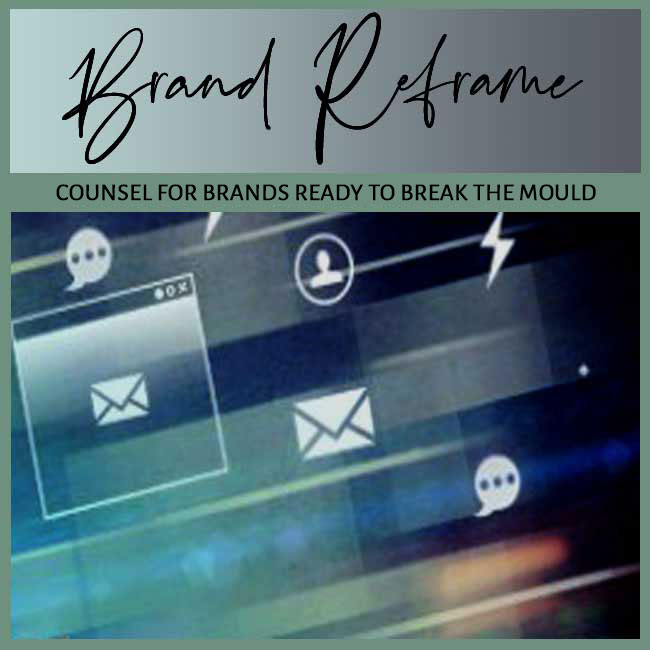
FOCUS: BRAND LAUNCH FAILURE | AUDIENCE: INVESTORS IN SLUGGISH BRANDS
BY: SHOBHA PONNAPPA | BRAND BREAKTHROUGH STRATEGIST | 45 YEARS | 125+ CLIENTS
I answer 6 tough questions about how oversimplified messaging can make a brand look shallow, when clarity means cutting corners.
It happens more often than people realise. A brand wants to appear clear and accessible … so it trims, distils, and edits until nothing meaningful is left. In the pursuit of clarity, it loses complexity, distinctiveness, and nuance. Investors call it minimal. Customers call it hollow. In this post, I unpack the six questions that reveal how misguided clarity can stall a brand before it even begins to move.
It usually starts with a desire to be understood at a glance. In theory, that’s smart. But clarity doesn’t mean dumbing down your brand. It means structuring your depth. Oversimplified brands remove everything that feels complex … even when that complexity is the heart of their value.
When clarity becomes an excuse to avoid explaining, you end up with bland taglines, flat promises, and generic visuals. True clarity helps people see your brand’s edge. Oversimplification hides it under the illusion of accessibility. And that’s how great ideas start sounding forgettable.
Minimalist messaging can feel elegant on launch day … but quickly turns vague in the real world. I’ve seen brands spend months refining a single-line proposition, only to realise that audiences didn’t know what they were actually buying. If clarity isn’t backed by narrative, it fails.
The fallout is always the same: prospects feel uninformed, teams struggle to align, and early adopters hesitate to spread the word. That silence isn’t confusion … it’s detachment. And it stems from a brand that looks crisp but says very little of substance.
Because they know clarity sells … but only when it builds trust. When a brand’s messaging is too basic, it raises questions. “Is this just another me-too product? Is there any depth to this offer?” Investors want scalable traction, and that comes from clear differentiation, not just clean layouts.
I often tell founders: you can be brief, but you can’t be hollow. Investors spot the difference. Oversimplification doesn’t just hurt perception … it erodes valuation, because it signals immaturity in strategy.
It looks like layered simplicity. Think of a brand message that lands quickly, then deepens upon engagement. The website has clarity, but also reveals nuance. The pitch is tight, but anticipates the smart follow-up questions. There’s a clear promise, and a layered story beneath.
Deep clarity respects your audience’s intelligence. It assumes they can handle insight … as long as you guide them through it. Launches that succeed balance the power of brevity with the weight of meaning. That’s how clarity earns attention … and keeps it.
Cool minimalism is often about optics, not meaning. Brands chase the look of premium startups … single-word slogans, sleek fonts, sparse decks. But when the substance isn’t there, it’s style without strategy. And in launch mode, empty style collapses fast.
I’ve worked on relaunches where the original idea wasn’t broken … it was just under-explained. The market saw a polished shell and assumed there was nothing inside. That misstep delayed traction by months. Minimalism isn’t a shortcut to clarity … it’s often a mask for vagueness.
Start by anchoring everything in positioning … not packaging. Your clarity should emerge from strategic roots: what you solve, who it matters to, why it’s different. Once that’s set, every headline, image, and asset must carry that strategic resonance.
Also, use contrast wisely. A clear message doesn’t mean every element looks the same. Use tone, texture, and pacing to guide your audience deeper. Keep clarity, yes … but give people reasons to stay, not just reasons to glance.
If these questions ring true, your launch might be stuck in the clarity trap. Simple doesn’t always mean strong. Clear doesn’t always mean compelling. It’s not about how few words you use … it’s about how much those words carry. A sharp launch strategy should distil your power, not dilute it. There’s still time to bring meaning back into the message.
If you’re brand owner or manager seeking stronger brand performance, this FAQ Insight Post I wrote could interest you: “FAQs: Legacy Habits That Quietly Trap Modern Brand Momentum.“
And if you’re a solo expert looking to sharpen traction, this FAQ Insight Post I worked on may resonate: “FAQs: Why Funnels May Convert Clicks but Not Conviction.“

"One BIG IDEA can turn brand stagnation into unstoppable movement. Spots are limited each week ... book your breakthrough session now."
Shobha Ponnappa
More Breakthrough Ideas … Case Studies & FAQs … from the Brand Launch Failure Category
Case Studies
FAQ Insights
Smart insights, real-world frameworks, and idea-driven clarity – designed to help brands move.
Get my fortnightly Brand Reframe newsletter. Smart insights, distilled thinking, and focused momentum to help your brand lead.

Get my free AI strategy guide. Smart prompts, sharper briefs, and practical ways to make AI support your brand momentum.

Just fill in the form to join. Get my newsletter and the guide shown alongside, all with several game-changing tips.